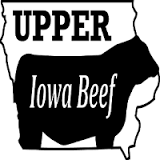 A monthly column written exclusively for Beef Central by North American beef industry commentator, Steve Kay, publisher of US Cattle Buyers’ Weekly
A monthly column written exclusively for Beef Central by North American beef industry commentator, Steve Kay, publisher of US Cattle Buyers’ Weekly
THAT I write this column in California and transmit it electronically to Beef Central, which then places it on its unique website for its subscribers to read, speaks volumes about the latest chapter in the history of information.
Whether we like it or not, we are all part of the global electronic network and also part of a social media phenomenon that has transformed communication and the way people express their opinions and demands.
The beef industries in Australia and North America were slow to embrace social media but have now done so whole-heartedly, be it through Facebook, Twitter, YouTube and other outlets.
At least in the US, the transformation of the industry’s public relations profile has been remarkable. From almost literally hiding in a cave hoping no pesky journalist would ask for information or an interview, industry leaders and grassroots producers now clamor to get on social media and explain how the industry works.
Only recently, though, has the industry – at least in North America – began to capitalise on the great story it has to tell. At the production level, themes include ranching families, some fifth or sixth-generation, battling the elements and caring for their animals.
Or the way feedlots use sophisticated technologies to provide highly nutritious diets for their cattle. Even National Geographic magazine last year paid a tribute to the exacting science of cattle feeding. Articles like this help counteract the absurd notion that beef production is “factory farming.”
Telling the beef story takes other forms as well. For example, the North American Meat Institute has produced eight videos in its Meat MythCrushers series that it promotes through social media outlets. The videos include everything from livestock practices to environmental and antibiotic myths.
The National Cattlemen’s Beef Association extensively features beef producers in social media stories, as does the Cattlemen’s Beef Board, the industry’s research and promotion body.
Just as important is the independent contribution made by hundreds of people engaged with the beef industry, scattered from coast to coast. One such person is Susan Strassburger, president of a long-established family meat purveyor in New York City.
Susan is well-known as that’s city most passionate cheerleader for meat. It’s little wonder her hash tag is suzysirloin. Then there are US cattle ranchers who spontaneously use social media to counter the falsehoods that fly around that same media.
Underpinning the telling of beef’s story must however also include meeting consumers’ needs. The vast majority of consumers want a safe, nutritious, quality product at an affordable price, i.e., value for money. But a growing number also want to know where their beef comes from and be able to trace its origin back to the farm or ranch.
The US industry has done a poor job in addressing this desire. Packers and retailers continue to sell mostly commodity beef, with just a few brands, and virtually no one is satisfying the desire for traceback.
Upper Iowa Beef program offers a vision for the future
Satisfying that desire is easier said than done. But a visionary group of farmers in Iowa is doing just that. A new niche beef processor in a small town called Lime Springs started operations February 23 with a program that offers a vision of the future for merchandising beef in the US
 Upper Iowa Beef (click here to view website) will start selling its beef under two brands to retailers and steakhouses in Wisconsin, Minnesota, Iowa and Missouri. Customers who buy or order the beef will be able to use their smart phones to scan a QR (Quick Response) code on the retail package or at a restaurant and find out about the beef’s origins. Upper Iowa Beef believes its products will be the only beef in the US to have a QR code on them to allow traceability back to the farm.
Upper Iowa Beef (click here to view website) will start selling its beef under two brands to retailers and steakhouses in Wisconsin, Minnesota, Iowa and Missouri. Customers who buy or order the beef will be able to use their smart phones to scan a QR (Quick Response) code on the retail package or at a restaurant and find out about the beef’s origins. Upper Iowa Beef believes its products will be the only beef in the US to have a QR code on them to allow traceability back to the farm.
The start-up comes after parent company LimeSprings Beef was incorporated in 2012. Its owners include 30 local Iowa farmers, about 12 of whom raise cattle. The company built a 10,000sq m plant (design illustration below), which will be able to process 112 head per day. The company intends to purchase all its cattle within a 160km radius of the plant.
The US beef industry is full of little acorns that grew into mighty oaks. There are those who started with five cows or one feedlot and gradually grew into some of the industry’s largest operators.
That Upper Iowa Beef is Iowa-based reminds me of how a few individuals with a grand vision began a packing plant in a corn field in Iowa in 1960 and turned the fledgling company into the world’s largest processor of fed beef.
That company was Iowa Beef Packers, later to become IBP and then part of poultry giant Tyson Foods.
I have no idea if little acorn Upper Iowa Beef will become the next IBP. But I love the fact that instead of blaming packers for perceived ills, local farmers decided to invest their own money in a vision of the future.

